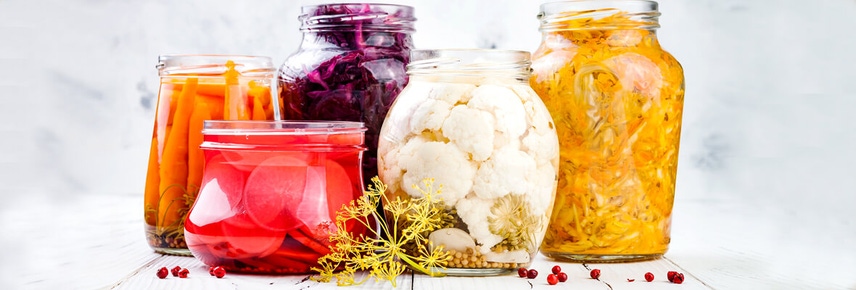
Food in focus: Fermented foods
Fermented foods have been around for thousands of years as a natural way of preserving foods.
Fermentation happens when carbohydrates in food are converted into alcohol or acids by live microorganisms (bacteria, yeasts and/or molds), helping to preserve the foods and often giving it a zingy flavour. Common fermented foods include yoghurt and kefir (with live cultures), sourdough, fermented vegetables such as sauerkraut and kimchi, most cheeses and a newer beverage on the block kombucha. Others include tempeh, natto and miso, all forms of fermented soy.
![]()
Are fermented foods good for you?
Before refrigeration, foods were fermented to preserve and extend their shelf life. The key benefit was improved safety of the foods, preventing food spoilage.
What about specific health benefits today? Cultured dairy products such as yoghurt are associated with reduced weight, type 2 diabetes and heart disease. Other potential benefits of fermentation include increased gut microbial diversity, easier digestion (breakdown of lactose), reduced GI (glycaemic index), and even the breakdown of phytic acid, improving absorption of some nutrients such as iron and zinc.
Some fermented foods also contain probiotics – beneficial bacteria which are involved in the fermenting process. However, these bacteria must still be alive at time of consumption and in large enough amounts to provide a proven health benefit. Proven health benefits are specific to the strain of probiotic. Check with your health care provider to make sure it is suitable for you, especially if you are pregnant or have a compromised immune system.
So how can you tell if the fermented product contains a probiotic? Having “probiotic” on a food label is a health claim and must be backed by documented scientific evidence. So, if you are looking for fermented foods with the additional health benefit of a specific probiotic, particularly for gut health, look for one that is correctly labelled with specific strain, dose and health benefit.
![]()
Are there any downsides?
Fermented foods are a safe option for most people, although some are high in salt (sodium).
If you are following a low FODMAP diet you may need to avoid some fermented foods. However, spelt sourdough bread, tempeh and fermented pickles/gherkins are all considered low FODMAP.
Among other less common side effects is bloating, however, generally it is only mild and fleeting. Fermented foods also contain histamine, which some people may have an intolerance to.
![]()
How to pickle your own foods
Making fermented foods at home requires important skills and equipment to ensure a safe edible product in the end. So consult fermentation experts before trying this at home or find out more about fermenting foods at home here.
If you want the zing without the fermentation, here’s a quick way to pickle some veggies at home. Just 15 minutes and some simple supplies is all you need. Whip up quick pickles by mixing white wine vinegar with caster sugar and once heated, pour this mixture over your choice of veggies. Simple!

The latest nutrition advice, plus health and wellness tips delivered to your inbox monthly

